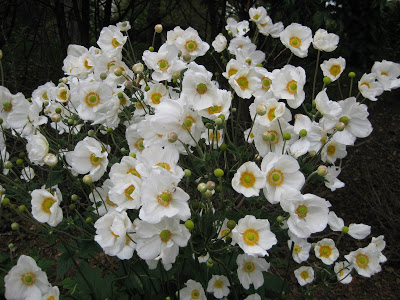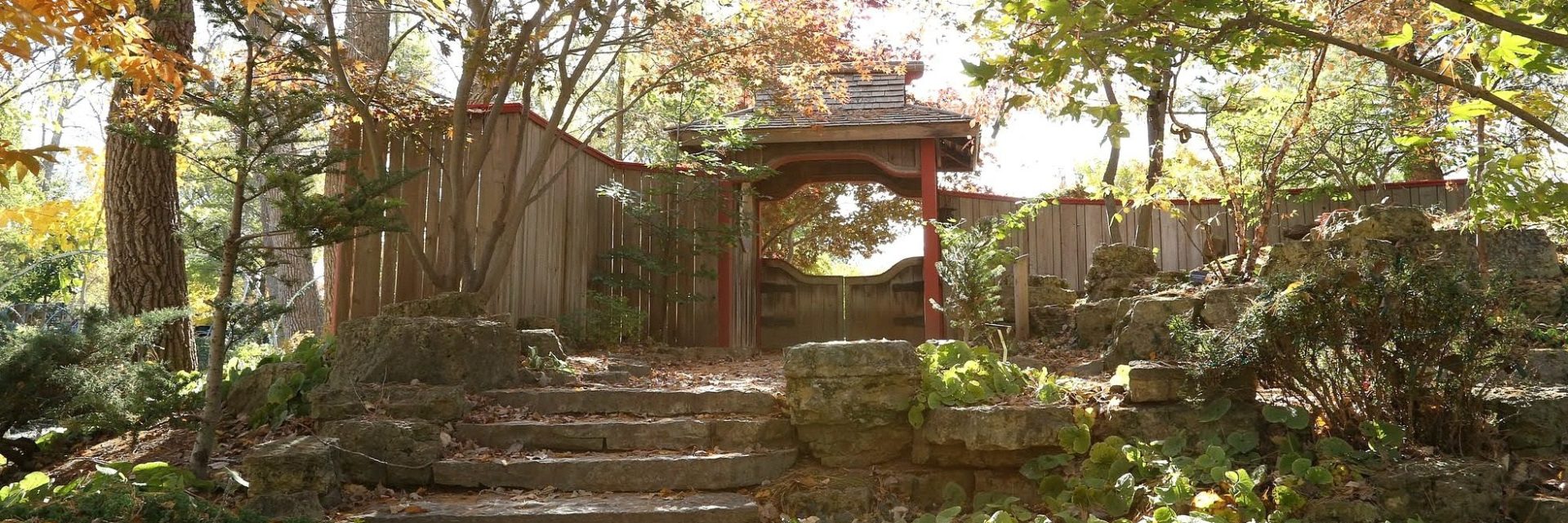
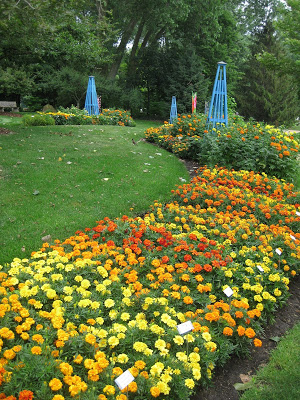
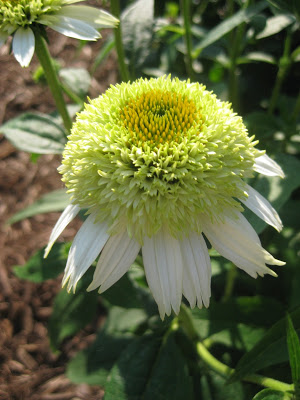
While overcast today, the temperatures weren’t too bad with highs in the upper 30 degrees F. The warm up over this past weekend melted a lot of the ice that had entrapped our Holiday Light Show (HLS) cords and lights in many locations. We had a good crew out there collecting in the gardens as well as doing some tidying as well. Big John, Larry H., Terry, Marv and Bob C. were all out in the gardens this morning. They guys took a huge dent out of the HLS tasks. Bob C. and Dick H. also did quite a bit of sweeping up as well. Dave, Vern, Jim and Gene all had carpentry work to accomplish and Ron P. was back to continue repairing HLS lights prior to storage. Dick H. was working on some additional projects and Dr. Gredler did more painting. Gary S. started making signs for our Caladium Collection and Bill O. had plenty of action in the Horticulture Center in the afternoon. Kathy P., Cindy and Kay worked on processing more seeds for our growers and there is light at the end of the tunnel with this process. We’re cross checking our seeds to make sure we have what we need for grounds as well as the Spring Plant Sale (Mother’s Day weekend!). I bounced between myriad tasks including ordering, labels, etc.
The classic white coneflower (Echinacea purpurea) never fails to dazzle when at summer peak. There are some older varieties that still have merit in the garden although some more modern selections are exciting as well. I’ve included photos of many that I’ve observed over the years including some exciting double forms as like ‘Coconut Lime’ seen directly above. Heights will range between 12″ and 36″ by variety so do some research prior to planting them in a full sun (ideal) situation with decent soils and ample moisture. Pollinators will appreciate these as well. I will say that some white selections don’t “age” well in that the older flowers will show petal browning and the plant looks tired and “dirty” during this transition. Some varieties will maintain a VERY long period of pure white; my favorites for a lengthy white contribution are ‘Milkshake’ and ‘Virgin’. Enjoy this abbreviated assortment of some of the best of the white coneflower varieties…
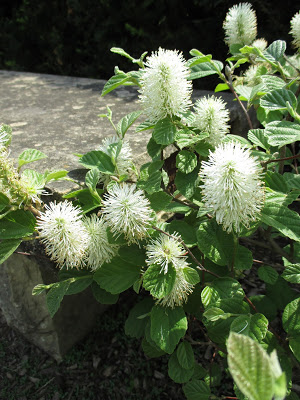
Today, although breezy, was sunny and mild with a high temperature near 50 degrees F. The thaw continues outside but created a pool of water on top of remaining ice which has made for very slick conditions. Big John and Larry continued with various projects including the continuation of progress with taking down the Holiday Light Show (HLS). I continue with three months of desk work and planning that has to occur in the next six weeks. It’s crunch time! We also saw Gary, Bob T., Vern, Bill O. and many others today. I have two presentations in Freeport, IL on Saturday for the Joys of Gardening Symposium hosted by the University of Illinois Extension and University of Illinois Master Gardeners.
This blog is a tribute to the witch alder (Fothergilla sp.) which I’ve always enjoyed. I should mention that we’ve had both successes and failures with this shrub which is native to the Eastern and Southeastern United States. Witch alders are in the Hamamelidaceae family along with witchhazels (Hamamelis). In essence, there are two native species…Fothergilla gardenii (dwarf fothergilla) and Fothergilla major (mountain fothergilla). However, there are some hybrid selections of crosses between both species which are considered Fothergilla x intermedia. Dwarf fothergillas will get around 3′-4′ in our climate with the mountain fothergilla reaching 6′-8′ ultimately. The hybrids vary in height but fothergillas are not noted for a fast growth rate so keep that in mind! The best article I’ve ever read on fothergillas is by Rick Darke and can be viewed at www.rickdarke.com/Fothergilla.pdf . What these slow growing shrubs have in common is beautiful, fragrant, early spring blossoms that look like little bottle brushes. The foliage catches up quickly after the blooms peak and the late fall color of these selections is excellent. There are some varieties with “blue” foliage that offer interesting foliage color although their fall color contribution is not as pronounced. Moist, acidic, organically rich soils with good drainage are essential although Fothergilla major is a bit more forgiving and is native to more upland areas. Many times witch alders are put in part shade under a deciduous canopy where they will grow although root competition from nearby trees may make for a less than ideal situation in terms of moisture. More flowers and better fall coloration will be seen in sunnier locations. The best specimens I’ve observed are in full sun. The variety above (and two photos below) is Fothergilla gardenii ‘Julia’ which is a solid performer as are the other varieties seen below. The blue forms have struggled for us but our greatest successes are with ‘Mt. Airy’ and Beaver Creek (‘KLMtwo’). I only included the variety below but research a bit further in to the species and expected features (height, etc.) as you desire.

